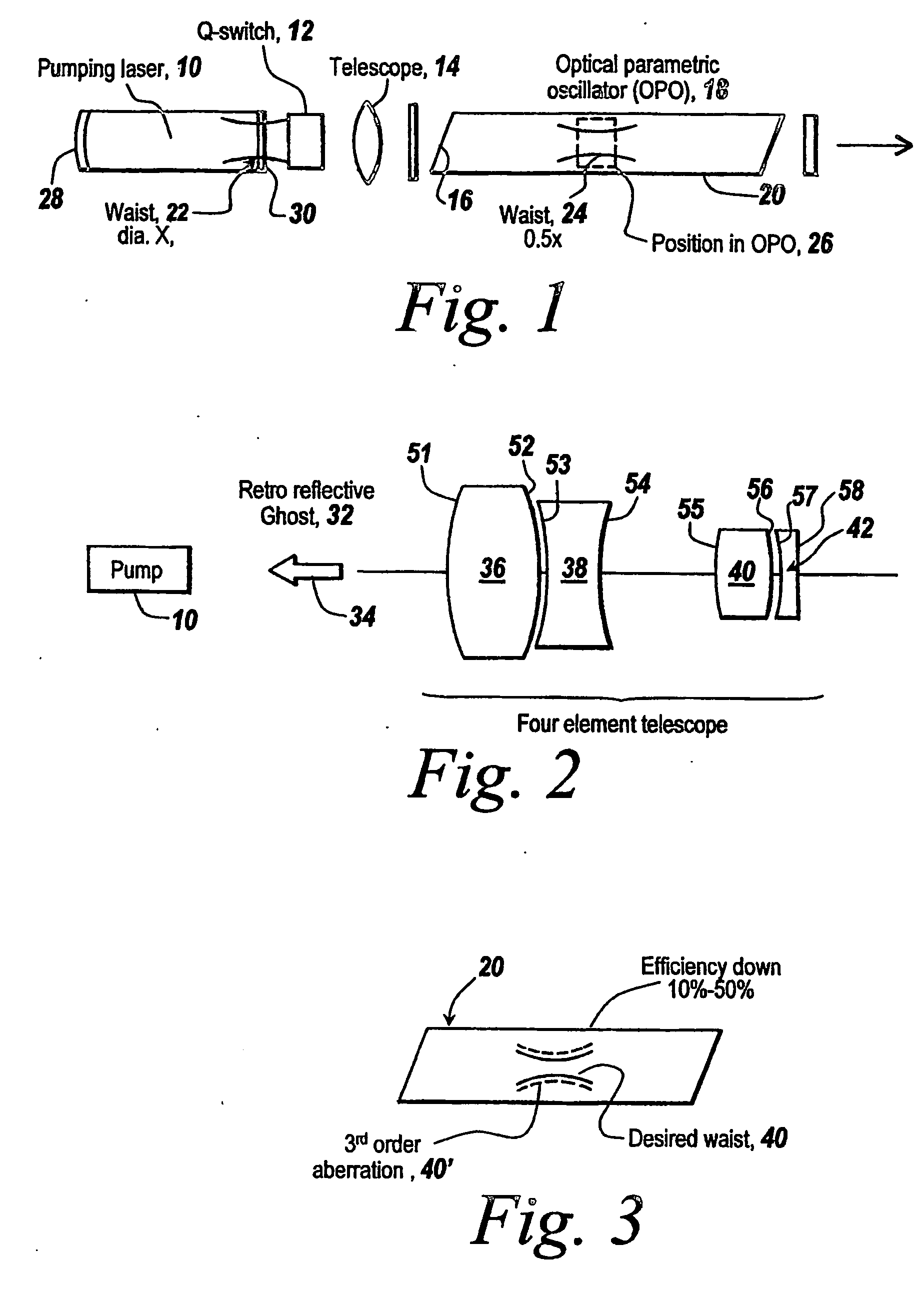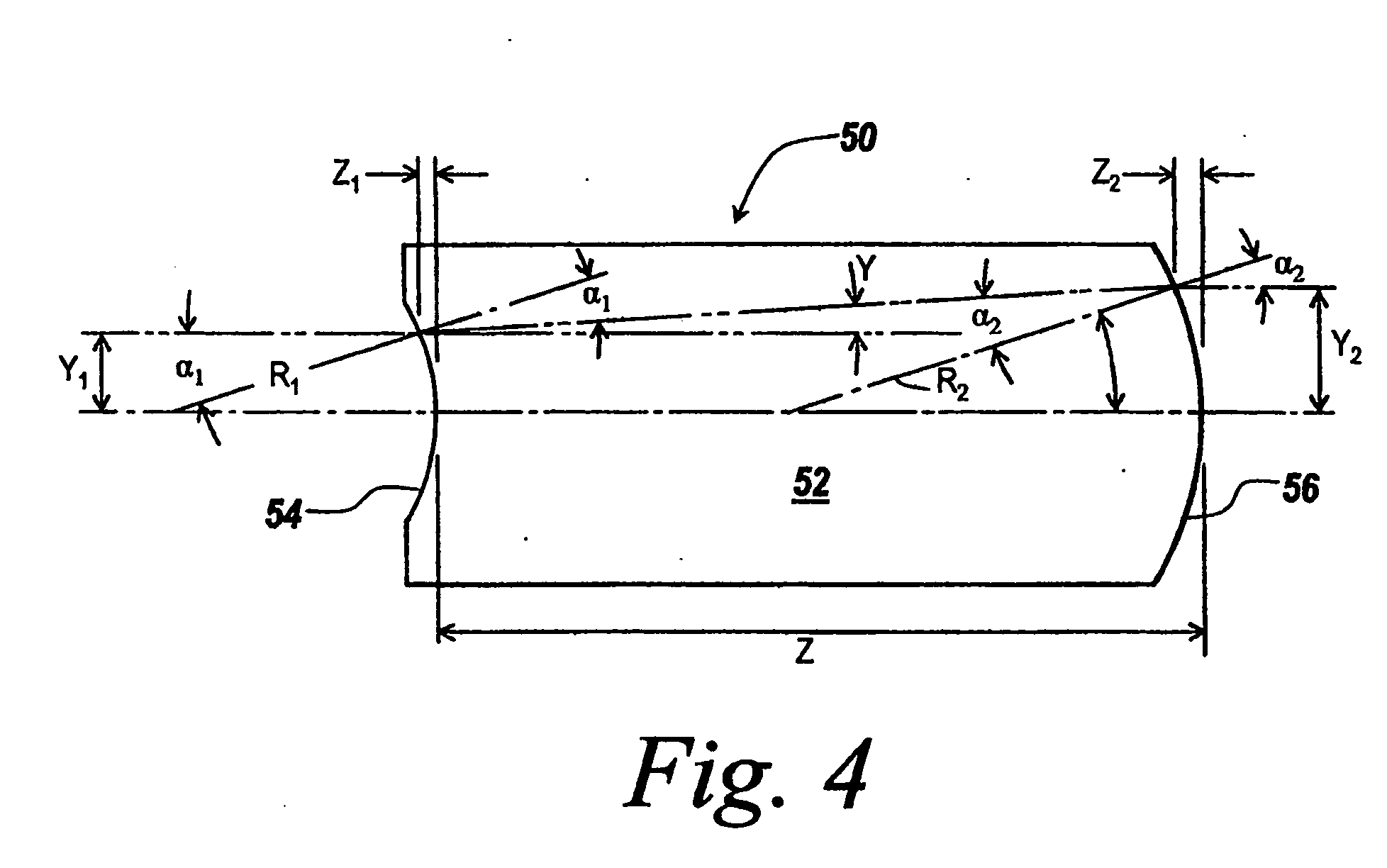Singlet telescopes with controllable ghosts for laser beam forming
a laser beam forming and ghost technology, applied in the field of single-leaf telescopes, can solve the problems of laser malfunction or die, materially affecting so as to eliminate 50% efficiency reduction, maximize the efficiency of the optical parametric oscillator or indeed the whole laser system, and reduce the cost
- Summary
- Abstract
- Description
- Claims
- Application Information
AI Technical Summary
Benefits of technology
Problems solved by technology
Method used
Image
Examples
Embodiment Construction
[0043] Referring now to FIG. 1, as is typically the case, a pumping laser 10 having a Q-switch 12 has its output focused by a telescope 14 into an end 16 of an optical parametric oscillator 18 having a nonlinear crystal 20.
[0044] The output of pumping laser 10 is characterized by a waist 22 having a diameter X. It is the purpose of telescope 14 to reshape the output of the pumping laser and to project waist 22 as waist 24 at a specific location 26 within nonlinear crystal 20.
[0045] Typically, telescope 14 is a demagnifying telescope or a so-called downscope. The result is that the waist diameter of the beam in crystal 20 is 0.5×, and is positioned at area 26 within the crystal.
[0046] It is important that the output of the pumping laser be faithfully reproduced in the nonlinear crystal, with pumping laser 10 typically having a concave mirror 28 and an output mirror 30, which is planar and partially reflective. It is the desired result that the waist produced at output mirror 30 be...
PUM
 Login to View More
Login to View More Abstract
Description
Claims
Application Information
 Login to View More
Login to View More - R&D
- Intellectual Property
- Life Sciences
- Materials
- Tech Scout
- Unparalleled Data Quality
- Higher Quality Content
- 60% Fewer Hallucinations
Browse by: Latest US Patents, China's latest patents, Technical Efficacy Thesaurus, Application Domain, Technology Topic, Popular Technical Reports.
© 2025 PatSnap. All rights reserved.Legal|Privacy policy|Modern Slavery Act Transparency Statement|Sitemap|About US| Contact US: help@patsnap.com



